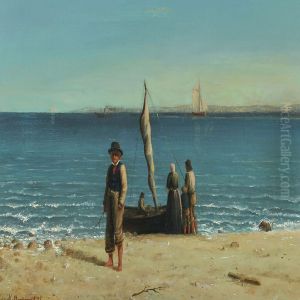M Berggreen Paintings
Andreas Peter Berggreen was a Danish composer and organist, born on March 2, 1801, in Copenhagen, Denmark. He initially intended to pursue a career in the military but shifted his focus to music and became an important figure in Danish musical life. Berggreen is primarily known for his contributions to Danish national song and folk music, as well as his work as a church musician.
Berggreen studied at the University of Copenhagen and took music lessons from Christopher Ernst Friedrich Weyse, a prominent Danish composer of the time. His musical education was comprehensive, including composition, theory, and organ performance. In 1838, he was appointed as an organist at Trinitatis Church in Copenhagen, a position he held for the rest of his life.
Apart from his duties as an organist, Berggreen was actively involved in music education and was appointed as a singing teacher at the Metropolitanskolen in Copenhagen. He also served as a music director at the Royal Institute for the Deaf-Mutes. His dedication to music education and his efforts to improve the quality of church music in Denmark were significant aspects of his career.
Berggreen's contributions to Danish music are notable for his collection and arrangement of folk songs. He published 'Folkehøjskolens Melodibog' in 1853, a collection of folk melodies and songs that became a cornerstone in the preservation and dissemination of Danish folk music. He was also involved in editing the Danish hymnal and contributed numerous original hymns and melodies.
In addition to his work with folk and church music, Berggreen composed a variety of works, including songs, piano pieces, and cantatas. His style was influenced by the Romantic movement, yet it retained a distinctly Danish character. He was commended for his ability to create simple, memorable melodies that resonated with the public.
Andreas Peter Berggreen died on November 8, 1880, in Copenhagen. His legacy lives on through his contributions to Danish music and his influence on the development of a national musical identity. While he may not be as widely recognized internationally as some of his contemporaries, in Denmark, he is remembered as a key figure who played a pivotal role in shaping the country's musical heritage.
